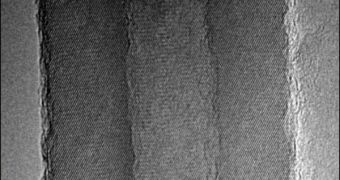Nanoscale structures such as tubes, wires and rods are considered to be the future of many industries, including that of renewable energy and electronics. But difficulties in producing these materials according to precise specifications hinder their wide-scale adoption in these fields. Now, researchers based in the United States, at the university of Wisconsin-Madison (UWM), announce that they managed to get new insight into how these materials grow, a feat that could see them entering use in the very near future.
The main problem hindering the field of nanotechnology today is the fact that, oftentimes, researchers cannot fully understand the exact mechanisms involved in the formation process of nanocrystalline materials. These structures have considerable potential applications in solar energy panels, high energy density batteries, and in better electronics, among others, due to their unique combination of chemical and physical properties. However, harnessing these properties according to demands, or combining them in a precise pattern, is still very difficult to do.
In a new paper, published in the April 23 issue of the esteemed publication Science, researchers at UWM, led by assistant professor of chemistry Song Jin, detail how one-dimensional (1D) crystals grow sometimes without catalysts. The process, they propose, is solely driven by the strain energy and screw dislocations that drive their growth, the US National Science Foundation (NSF) reports. The NSF's Division of Materials Research was the primary source of funding for the investigation. The study was based on the common semiconductor material zinc oxide, which is extensively used in electronics.
“The strain energy within dislocation-driven nanomaterials dictates if the material will be hollow or solid. Tubes are formed when strain energy gets large enough and the center of the nanostructure hollows out to relieve the stress and strain. Once we understand that the growth of these 1D nanomaterials can be driven by screw dislocations, we can see nanotubes and nanowires are related. Furthermore, we've shown that growth of nanotubes or nanowires without the use of a catalyst in solutions can be rationally designed by following a fundamental understanding of crystal growth theories and the concept of dislocation-driven nanomaterial growth,” the expert says.
“For more practical purposes, we think that this work provides a general theoretical framework for controlling solution nanowire/nanotube growth that can be applicable to many other materials. This could open up the exploitation of large scale/low cost solution growth for rational catalyst-free synthesis of 1D nanomaterials,” Jin concludes.

 14 DAY TRIAL //
14 DAY TRIAL //